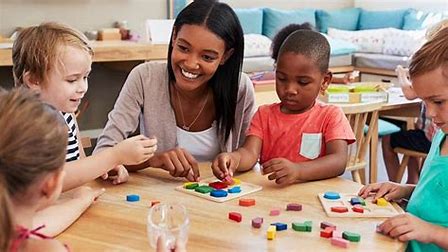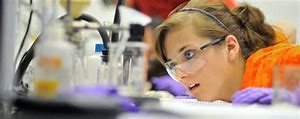Scientists. Technology gurus. Engineers. Mathematicians. We need these highly skilled professionals to solve problems, to make new discoveries, and to advance the quality of life around the globe. The trouble is, we are quickly running out of teachers to prepare future workers in these areas.
A couple of months ago I published a blog post entitled Tackling the STEM Teacher Shortage and am pleased it got noticed. This is a huge issue that isn’t going away any time soon, and it will take a concerted effort to turn the ship around and get it headed in the right direction.
I was interviewed by a freelance writer working on a piece for a national publication on this topic; it was recently published and while I’m pleased to see she used some of the information I provided, it sure would have been nice to have received at least a mention in the article. Since that didn’t happen, I’m not too inclined to promote her work. But, I wanted to add my own follow-up and offer some additional thoughts for consideration about the national shortage in STEM classrooms:
Why Don’t We Have Enough Teachers?
There’s no single cause of the teacher shortage, which makes it that much more challenging to address. Some of these factors, however, include:
(1) Low teacher pay. When you figure all the time you put in outside of student contact hours during the school day—all those nights, weekends, holidays, and even summers when schools aren’t even in session—it’s easy to see that teachers actually make very little. The reality is that they have bills to pay and children to raise just like everyone else, and in many cases, there are other jobs that simply make it easier to provide for their families, particularly in the STEM sector.
(2) Many teachers feel undervalued and disrespected. They don’t always get the support they need from the school principal or parents. Regardless of how dedicated or committed we may be, no teacher is an island unto him or her self—and they need to be able to trust that they will have support from others if and when the need arises. This can be particularly true in high demand areas.
(3) Poor preparation. I call this the, “What did I get myself into?” syndrome. Now, while I think by and large we as an education community have gotten better over the years with how we prepare our teachers, we still have a lot of room for improvement. You would never expect a pilot to fire up the engines of a 747 and take off with 200 passengers on board without a LOT of extensive training and practice, and I sure wouldn’t entrust my financial planner with my life’s savings if all she had to do was pass an exam or complete a program that was designed 30 years ago. But that’s what we often see in teacher prep programs—we have such a wide range of preparation programs in our country, many of which quite frankly do not prepare teachers for today’s classrooms. For example, some schools of education require a full-year of clinical practice before a teacher candidate completes their program while others may only have an eight-week student teaching program. Some may have full-length courses or modules covering topics that are essential to classroom success such as current teaching methods, using assessment to steer instruction, and of course, effective classroom management—while others may take their candidates through their entire prep curriculum over a two-week workshop, and then place their seal of approval on them and recommend them for state licensure. My heart goes out to these candidates, because they often feel ill-prepared for the reality of being in a classroom, meeting the needs of students with a variety of needs. As a result, many of these individuals leave the classroom after a year, with about half leaving the profession within 5 years of receiving their teaching license.
Piecemeal Approaches – Piecemeal Results
Multiple states, and even individual school districts have taken it upon themselves to find ways to recruit teachers in those areas of highest demand. But the results of their efforts have been mixed, at best, for a couple of main reasons:
(1) Few state departments of education collect data regarding supply/demand. They are not reaching out to school districts in their state, engaging them in real conversations about what their needs are. That leads to a lot of (2) piecemeal approaches that are often kneejerk reactions to anecdotal information, and those efforts are rarely strategic and coordinated. So, in a lot of instances, we don’t really know the extent of the problem in a given state, nor can we project how many science or math teachers will likely be needed over the next decade—and (3) we have multiple groups (state departments of education, school districts, and universities) all wanting to address the problem. But they are mostly working in silos, not as a unit moving synchronously. Very little data are being tracked, and the result is a train barreling down the track that continues to pick up speed.
Now, one of the strategies that several state departments of education that tried is that they have permitted alternative routes to licensure through non-traditional educator preparation programs (Nevada, Arizona, California, Texas, New Jersey, Florida, New York, and many others). These models vary widely from state to state; some only excuse student teaching experience with 2 years of documented employment as a substitute teacher, or as a paraprofessional while still requiring all other coursework and exams, while others simply require a bachelor’s degree in ANYTHING, and proof of passing the state’s required licensure exam.
The virtual school movement is also gaining traction in a lot of states for many reasons, but in part because of the inability for school districts to find qualified teachers in high demand areas such as math and science. Multiple school districts could pool their resources, form some type of co-op and essentially hire one Calculus teacher who could potentially provide instruction for hundreds of high schoolers, depending on how many sections were offered. But while it sounds good and has a lot of potential, this approach isn’t without its drawbacks, given that quality assurance measures for virtual instruction, particularly at the P-12 level, still remain largely undefined. That means we often find huge gaps in quality, which could be an entire conversation on its own.
There have also been some privately-funded initiatives, such as:
- National Center for Teacher Residencies (NCTR): This organization doesn’t necessarily focus on the teacher shortage per se, but its mission is to support a network of residency programs dedicated to preparing highly effective urban public-school teachers. It is built on the “grow your own” premise, with the thinking that (1) individuals who already have strong ties in a local community either by living there or working in the school district will likely stay in that community, thus reducing turnover, and (2) may understand and meet the needs of students in that district where they already live, or where their own children attend school.
- 100Kin10 Project: 100Kin10 was birthed a few years ago as a result of President Obama’s Race to the Top initiative and was given its wings by the Carnegie Corporation. Its mission is to connect universities, nonprofits, foundations, companies, and government agencies to address the nation’s STEM teacher shortage, with the goal being to produce 100,000 STEM teachers by 2021.
In it for the Long Haul: Eliminating the Band-Aid Fixes
I really believe that solving the teacher shortage over the long haul will require a comprehensive, cohesive approach that brings together our state partners, our federal agency partners, and equally as important—our school districts and our community partners. I’m talking here about school principals and teachers, as well parents and workforce stakeholders. All these groups need to have a seat at the table; they need to do a lot of listening and then they need to truly work together on a planned, purposeful strategy for ensuring teachers of excellence for every classroom in the United States. I think the piece that’s missing is centralized leadership in bringing this all together—it seems to me that it would be terrific for Secretary of Education DeVos to take on that role. It would be the perfect opportunity to demonstrate her commitment to public education in our nation.
Some Final Thoughts
Those of you who subscribe to this blog and follow me on social media know I’m all about academic excellence—meaning that I believe every initiative attempted at addressing the teacher shortage should be done with that benchmark in mind: not only to fill classrooms with teachers but fill them with teachers of excellence—individuals who demonstrate a propensity for success in the classroom, and who have received exceptional preparation. Not to sound dramatic, but I truly believe that the quality of education we provide to our students directly impacts the quality of life we enjoy in our nation. We must commit to working together to meet this challenge.
–rrf
Dr. Roberta Ross-Fisher is a national leader in educator preparation, accreditation, online learning, and academic quality assurance. An accomplished presenter, writer, and educator, she currently supports higher education, P-12 schools, and non-profit agencies in areas such as competency-based education, new program design, gap analysis, quality assurance, leadership, outcomes-based assessment, and accreditation through her company, Global Educational Consulting, LLC. She also writes about academic excellence and can be contacted for consultations through her blog site (www.robertarossfisher.com)







